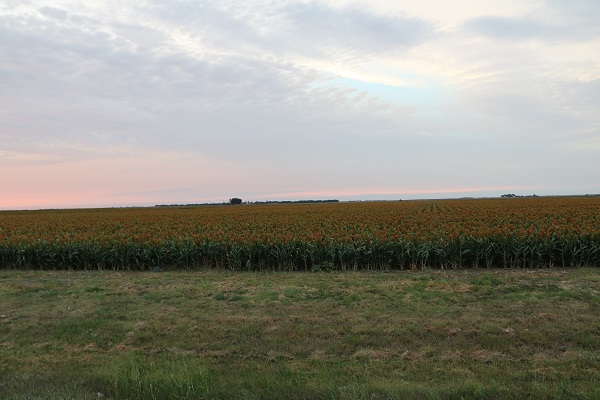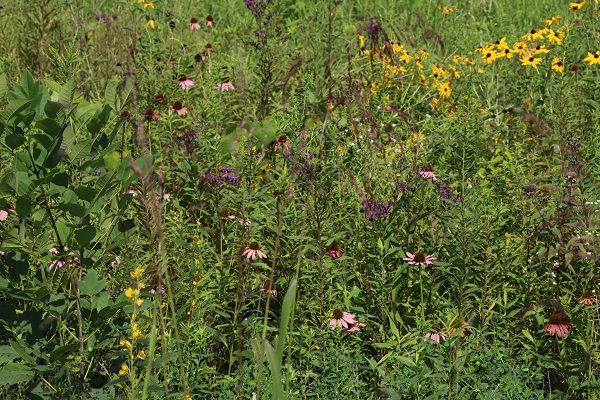I just came back from a road trip to Colorado – our first road trip since 2002. We drove to & from CO from NH via Ohio, Illinois, Indiana, Missouri, Kansas and Nebraska. While I knew we’d be going through miles and miles and miles of fields – what surprised me was lack of crop diversity. Of course I expected lots of corn, but I hadn’t expected that the only other crops we’d see (with the exception of 1 farm in Nebraska where we saw 3 fields of sunflowers) were soybean and sorghum.



This really drove home the point about one of the challenges our honeybees face – Monoculture, having only one crop (or possibly two) available for forage within a many mile radius.
Pollen is a honeybee’s source of protein, and nectar is their source of carbohydrates. Just like the food we eat varies in how nutritional it is for us, flowers vary in their “honeybee nutritional value”. For example, the pollen and nectar from dandelions is a high quality, nutritional food source for the bees in the spring, but pine pollen hold little nutritional value for them – even though it covers all of our house in the spring! Since honeybees will forage for nectar and pollen within a 2-3 mile radius of the hive, they need a variety of floral sources within that area in order to maintain a healthy hive. One way to think about this is – if the only food you had access to was steak, it tastes good for a few meals, but your health will suffer if you don’t get a more balanced diet soon.
One thing farmers are starting to do is dedicate “strips” on the sides of the plantings to pollinator habitat where they let wildflowers grow. Research has shown that dedicating these areas, not only helps address some of the mono-culture issues, but also can result in better crop yields because it attracts native pollinators as well as helps keep them healthier. The National Resources Defense Council (NRDC) has programs to work with farmers to design and fund pollinator habitat. Fortunately, we did see some evidence of these types of planting around some of the fields.


We noticed the same thing Heather during our trip to CO, mile after mile of corn. We saw very little diversity. I found your entry very interesting and informative. Thank you.
LikeLiked by 1 person